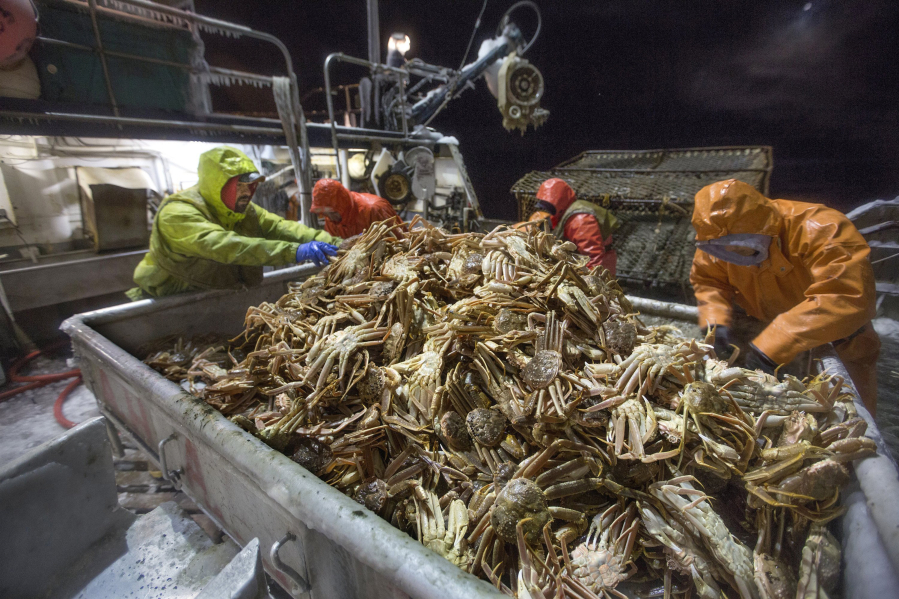Alaska officials have canceled the fall Bristol Bay red king crab harvest, and, in a first-ever move, also scuttled the winter harvest of smaller snow crab.
The action is a double whammy to a fleet from Alaska, Washington and Oregon pursuing Bering Sea crab in harvests that as recently as 2016 grossed $280 million.
“I am struggling for words. This is so unbelievable that this is happening,” said Jamie Goen, executive director of the Alaska Bering Sea Crabbers. “We have third-generation fishermen who are going to go out of business.”
The closures reflect conservation concerns about both crab species in the aftermath of bleak summer populations surveys. The tough decisions to shut down the snow crab and fall king crab harvests came after days of discussions by Alaska Department of Fish and Game biologists and senior agency officials who faced crabbers’ pleas for at least small fisheries.
“Management of Bering Sea snow crab must now focus on conservation and rebuilding given the conditions of the stock,” the department said in a Monday statement announcing the snow crab cancellation.
Snow crab populations collapsed in the aftermath of a 2019 Bering Sea warming that scrambled the broader marine ecosystem, and last year’s snow crab harvest of 5.6 million pounds was the smallest in more than 40 years.
Scientists are still researching the causes of the snow crab population collapse, which likely include increased predation as well as stresses from the warmer water that caused crabs’ metabolisms to increase and could have led to starvation.
Alaska, within the limits of a federal management plan that comes up with an allowable biological catch, determines how many crab are caught.
A scientific model of the snow crab population reviewed last week by the federal North Pacific Fishery Management Council indicated there may have been enough this year for another small harvest. But Ben Daly, an Alaska Department of Fish and Game research coordinator, said the model has struggled to account for the dramatic population decline after the 2019 warming, and state officials were concerned it might not be accurate.
“We have extreme conservation concerns about the population. We have serious doubts about the model,” Daly said.
The fall red king crab harvest was canceled for the second year in a row — a move that reflects the low number of mature female crab, which although not targeted in the harvest, are an indicator of the broader health of a stock that has been in long-term decline. The survey needs to find at least 8.4 million mature females to greenlight a harvest, and the 2022 survey, though it showed a light improvement from 2021, still fell below that level, according to Daly.



